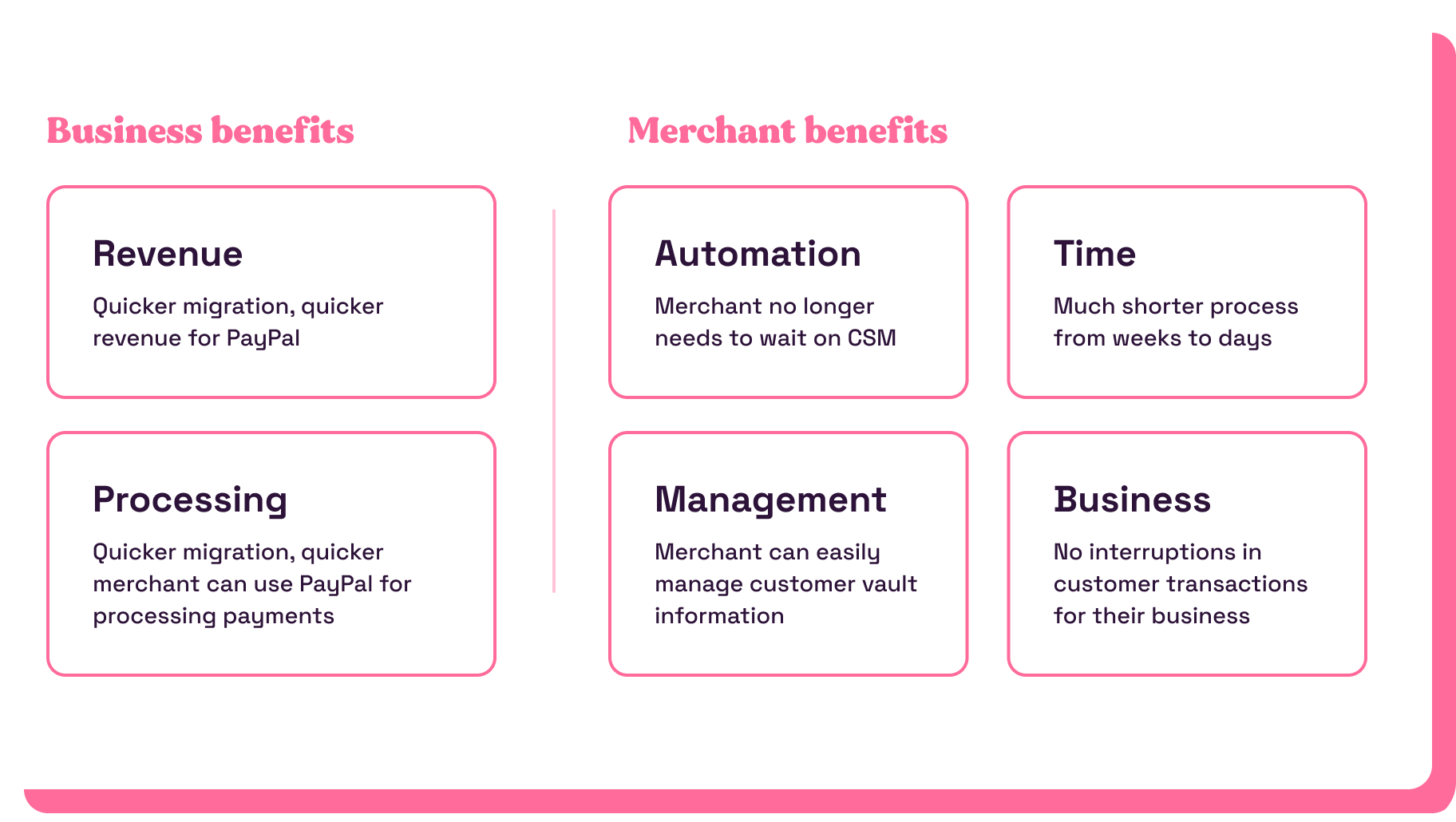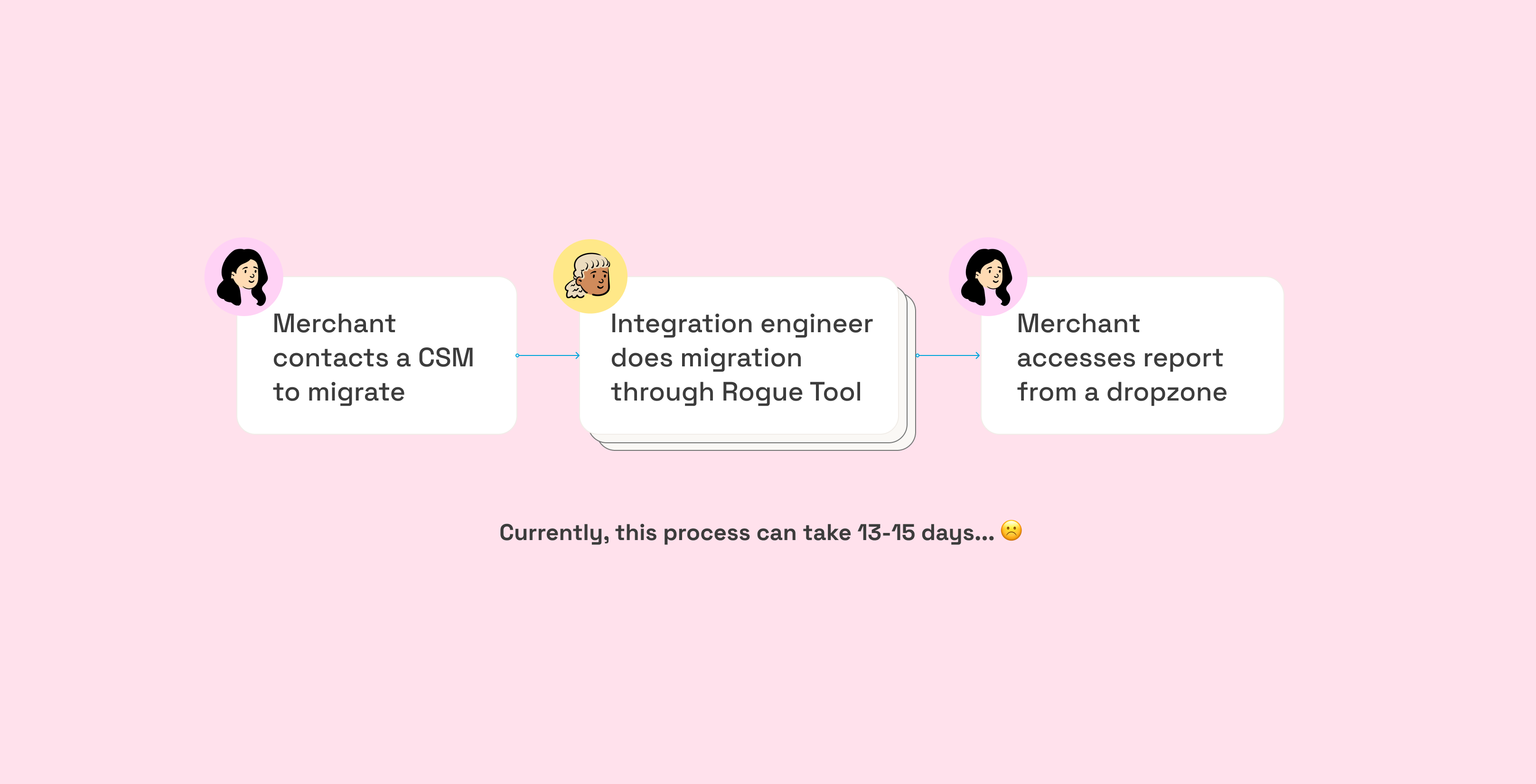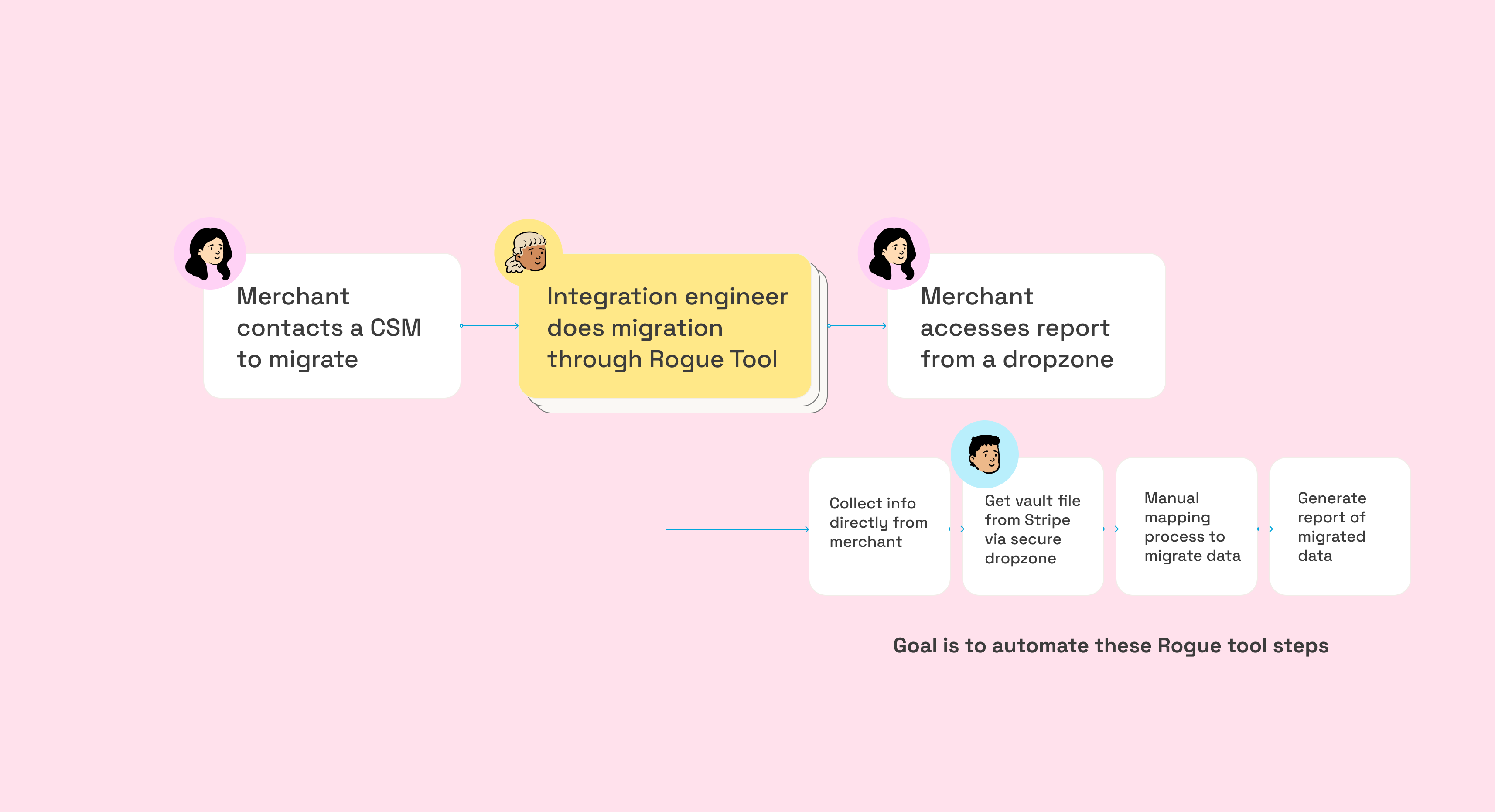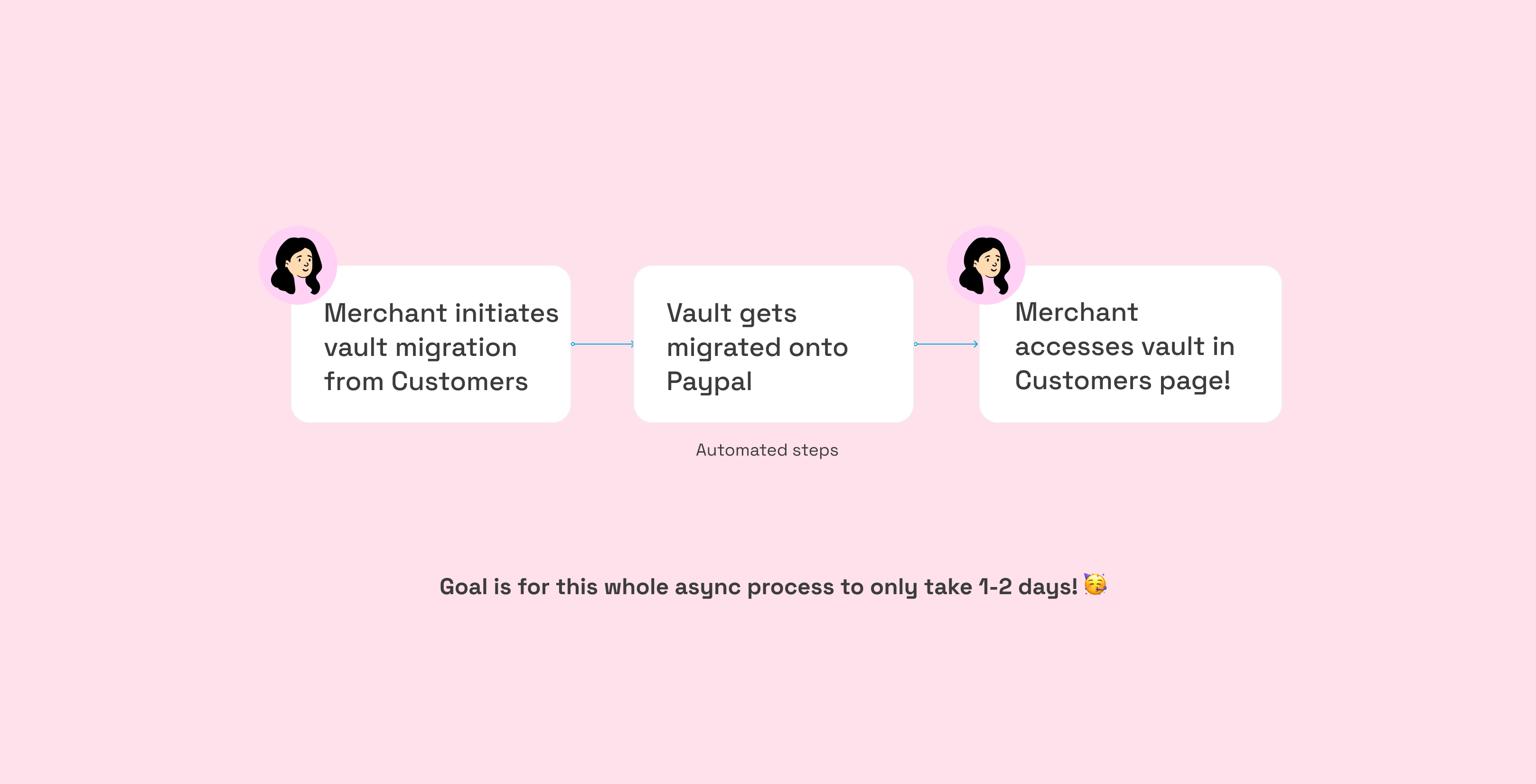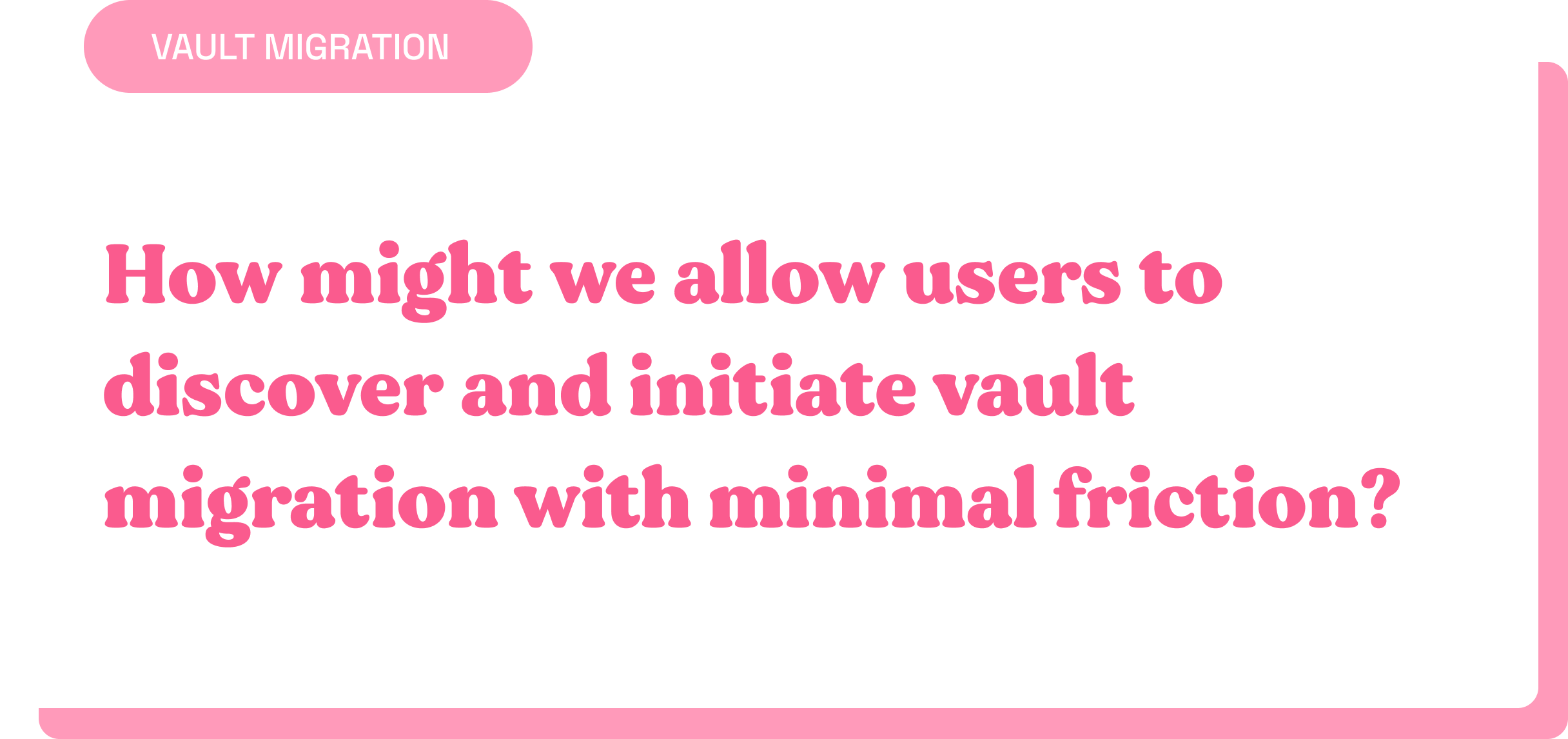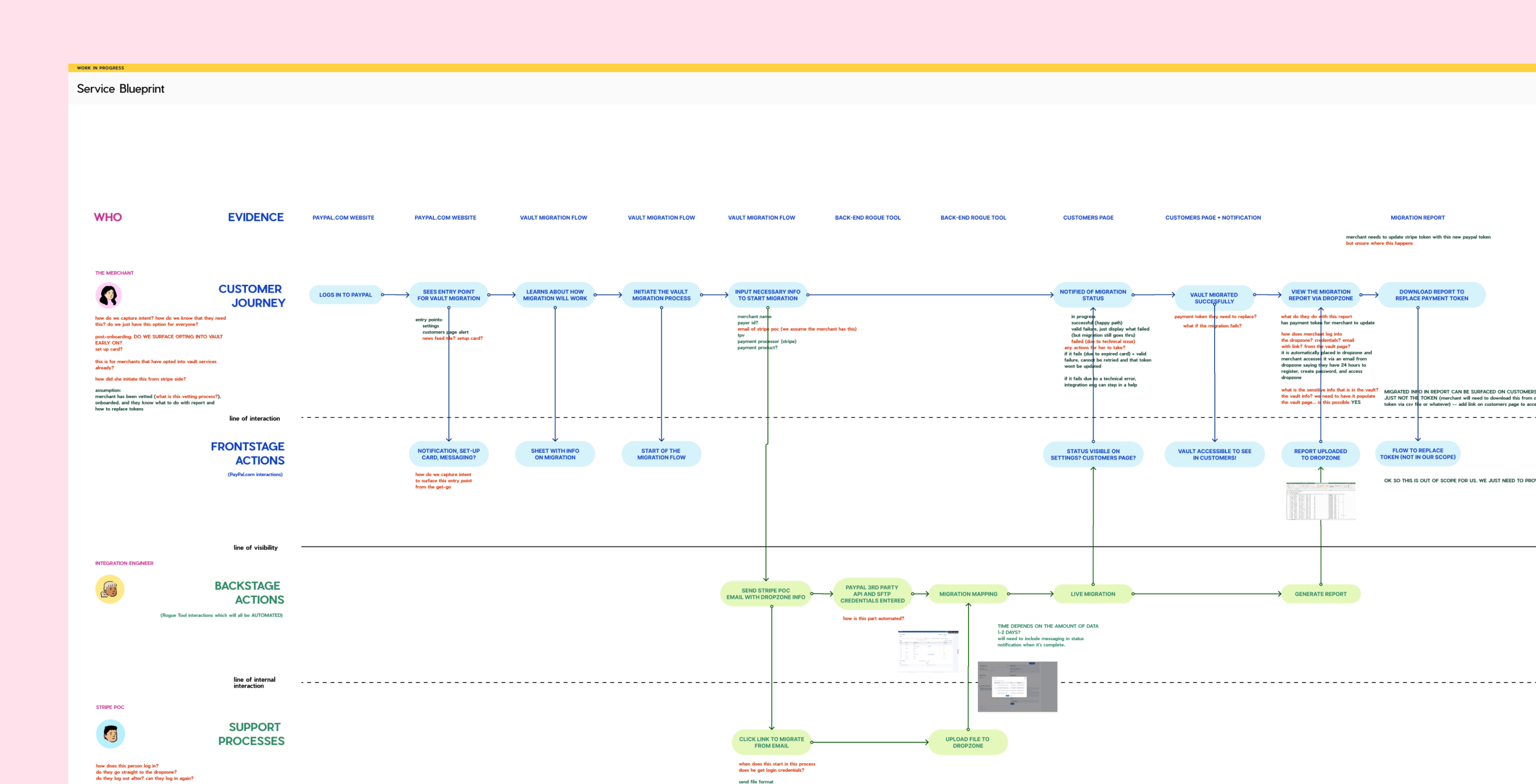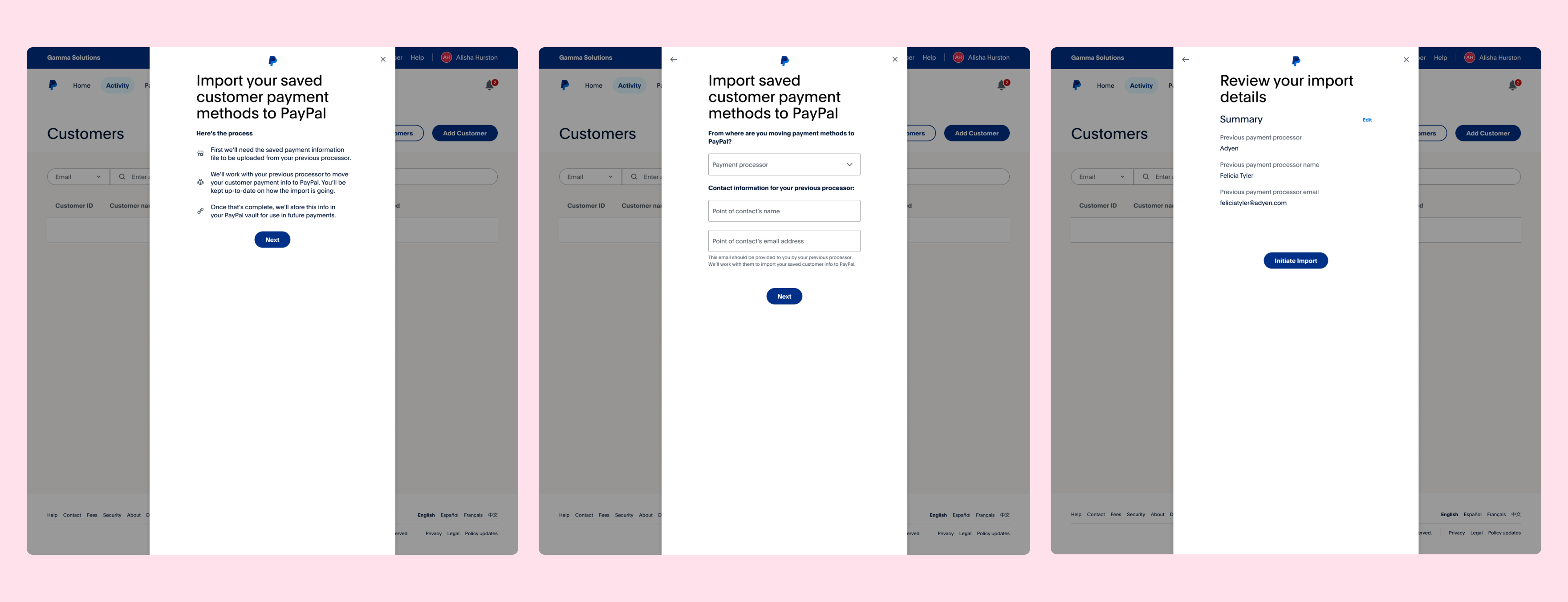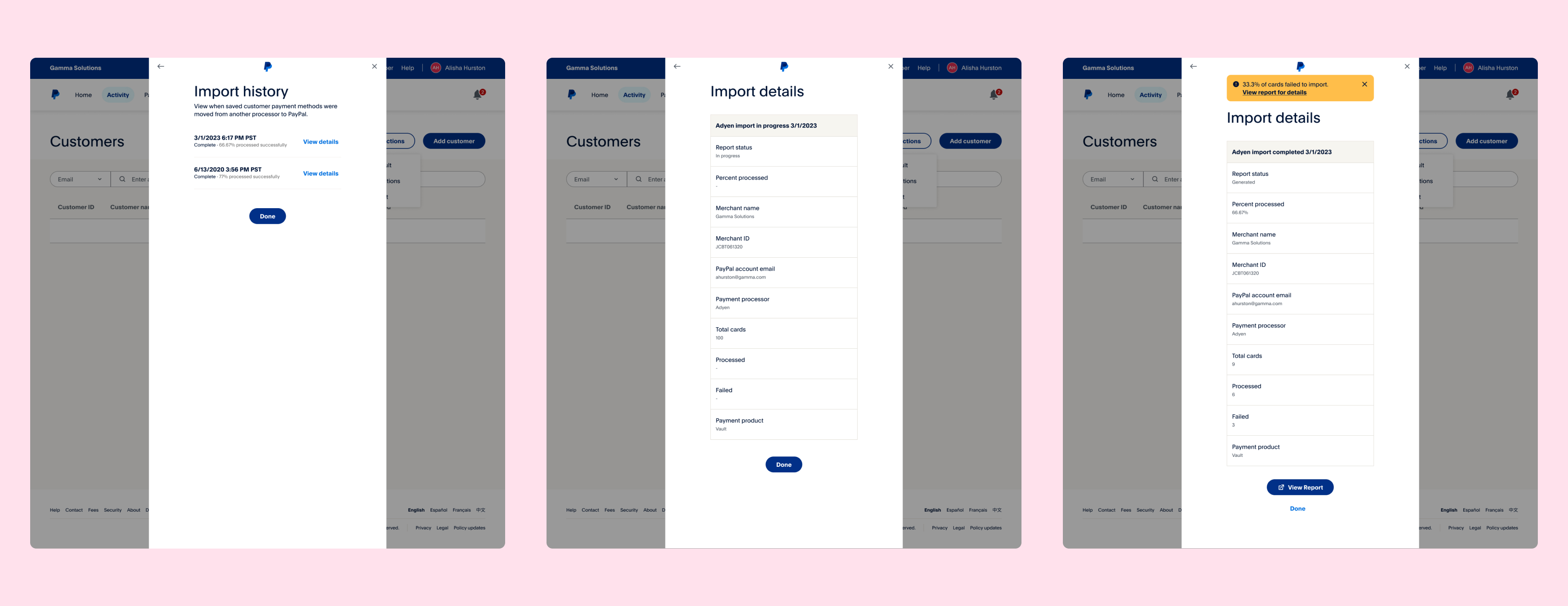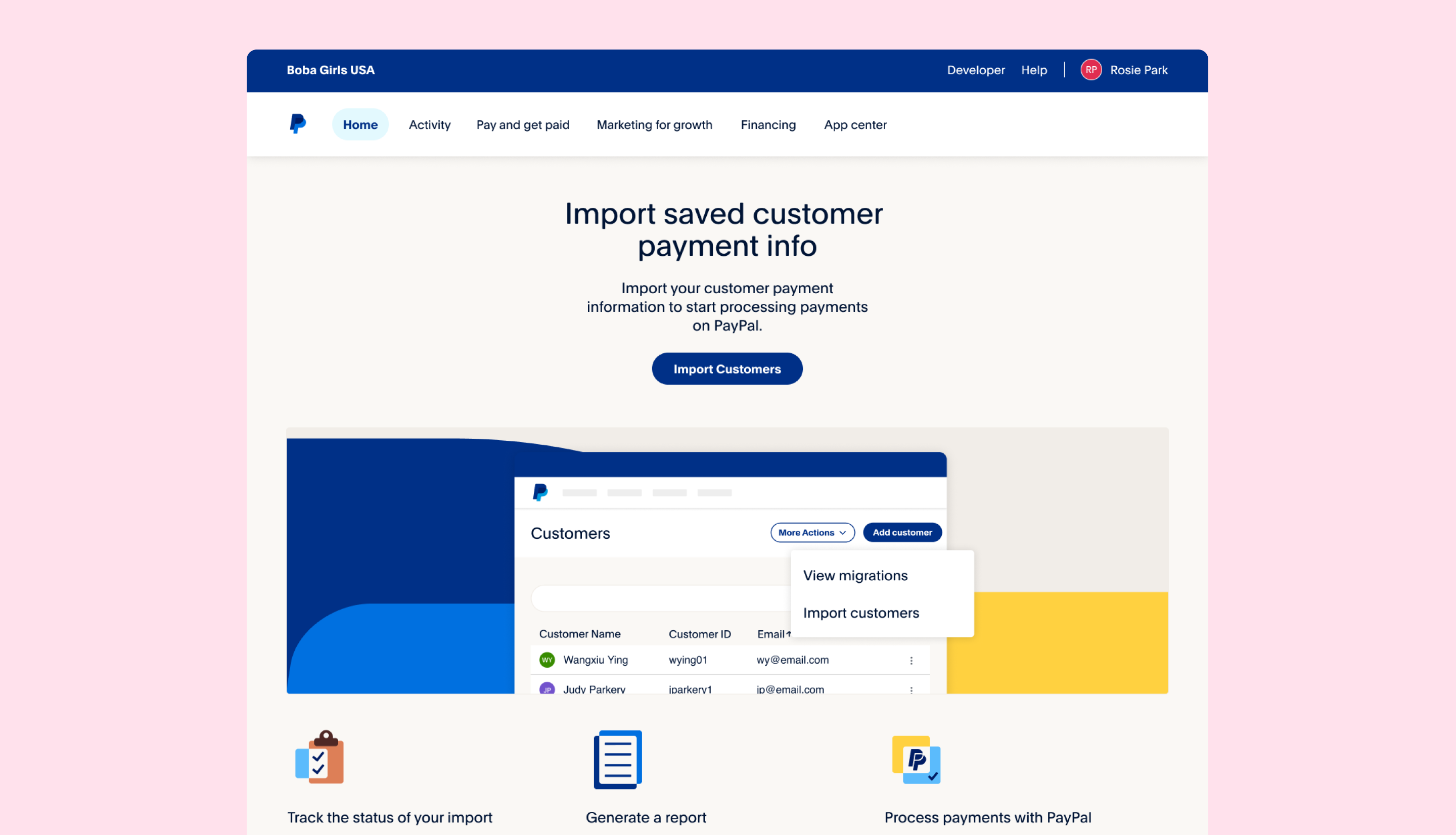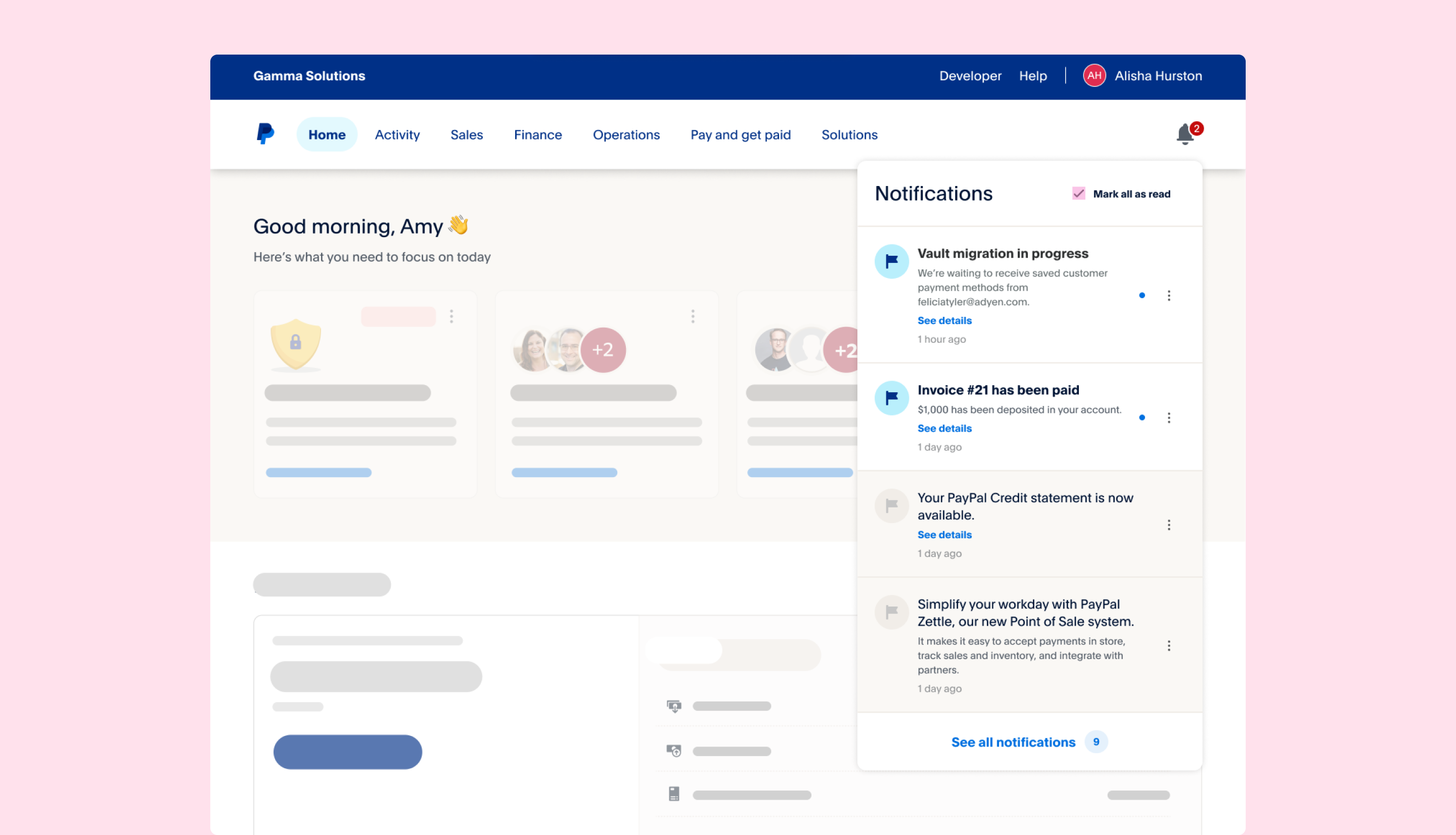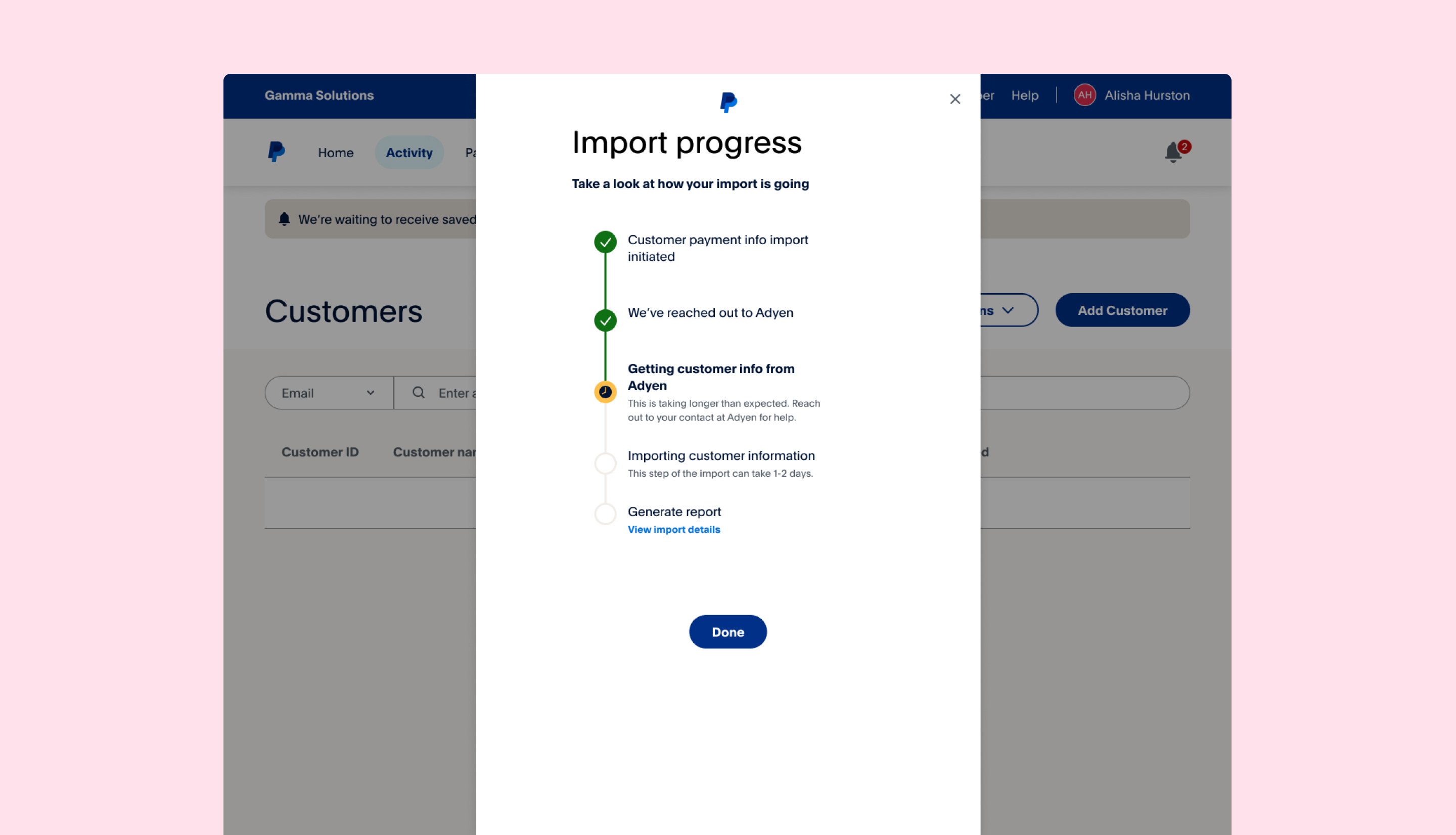Service blueprint
Due to how complex the flow was with various touchpoints and an async process, I facilitated a
service blueprint activity. I worked with my cross-functional team of product, research, content,
and engineering to fill in any gaps we had and make sure we were all aligned.
Exploring solutions
After getting a clear understanding of the user needs and the touchpoints of the flow, I was able to
deliver a flow to test on users.
Data-driven iteration
We conducted usability tests on 6 small to mid-sized merchants.
The users were primarily business owners, finance managers, accountants
that may have a need for stored customer payments due to recurring billing/subscriptions.
The goal was to test overall usability of the flow and get feedback from merchants.
From the test, we were able to identify some pain points with the initial flow.
Length of process not clearly communicated
Lack of context before starting migration
Need a way to track the migration status
Design explorations
After the user research sessions, I was able to iterate on new concepts
to address the pain points we identified.
In thinking about how to better communicate the length of the process and provide context before
starting the migration process, I incorporated a context-setting introduction page.
This page outlined what this new feature is, what prerequisite steps were required, and had a FAQ section
to address any further questions users may have.
I also incorporated enhanced notifications in order to allow merchants to be aware of important updates
in a more seamless way. Rather than relying on emails that could get lost, I leveraged a notification bell to
communicate important updates.
Since users communicated a need to track the specific step of migration status along the way, I created
a stepper feature that allowed users to see exactly what stage of the migration they were on. This helped
to provide visibility into what is going on, so that they could stay informed at all times.
Impact for merchants
We were able to deliver an optimized experience for merchants!
86%
reduction in time it takes to migrate customer information
8,000+
US-based merchants adopted this flow as of Q4 2023
Lessons learned
Some lessons learned along the way...
When in doubt, map it out!
Research can uncover opportunities
Content alleviates complexity
In an ideal world...
I would test this flow on more merchants than just 6 to get a deeper understanding of their needs!

